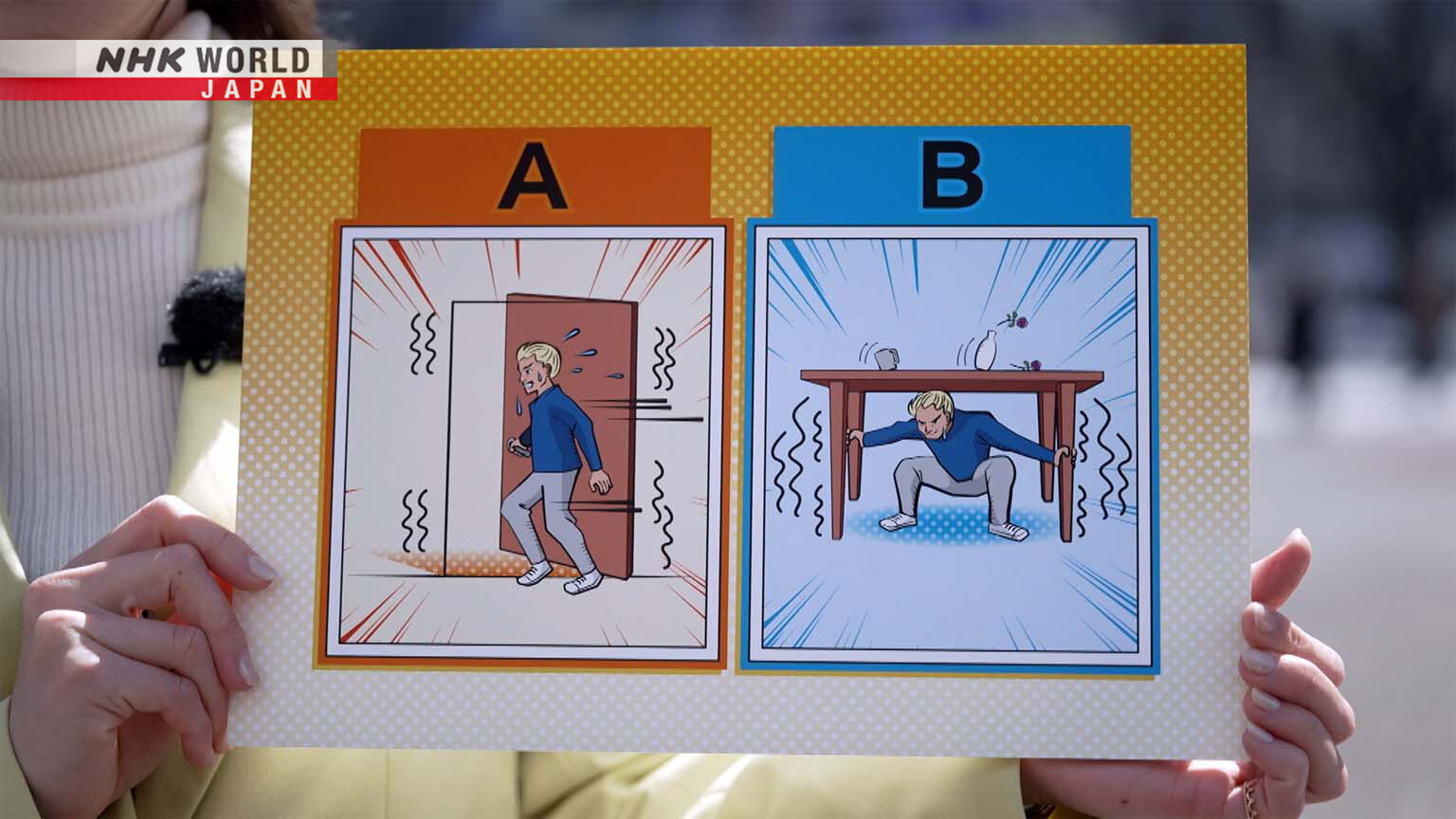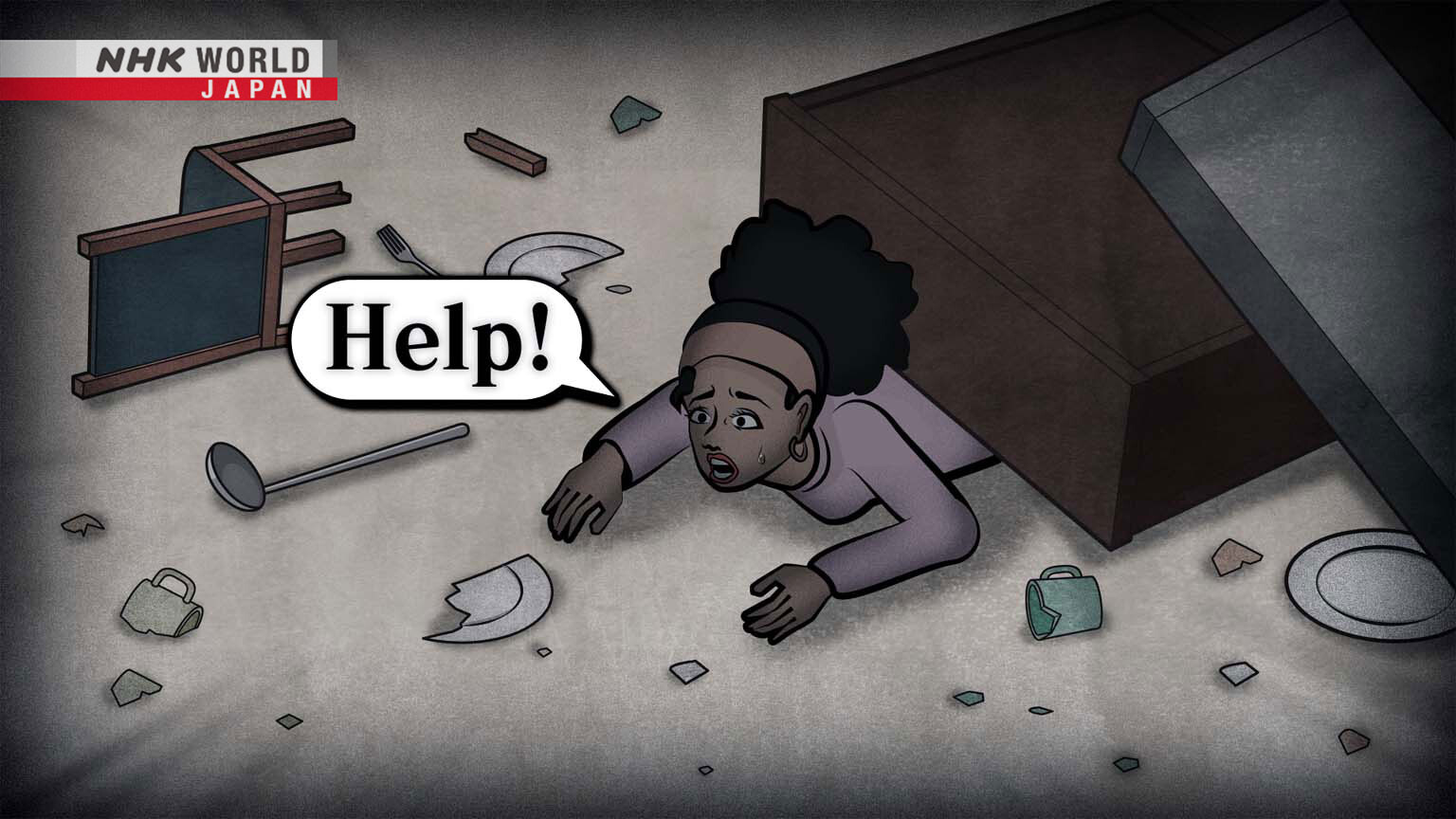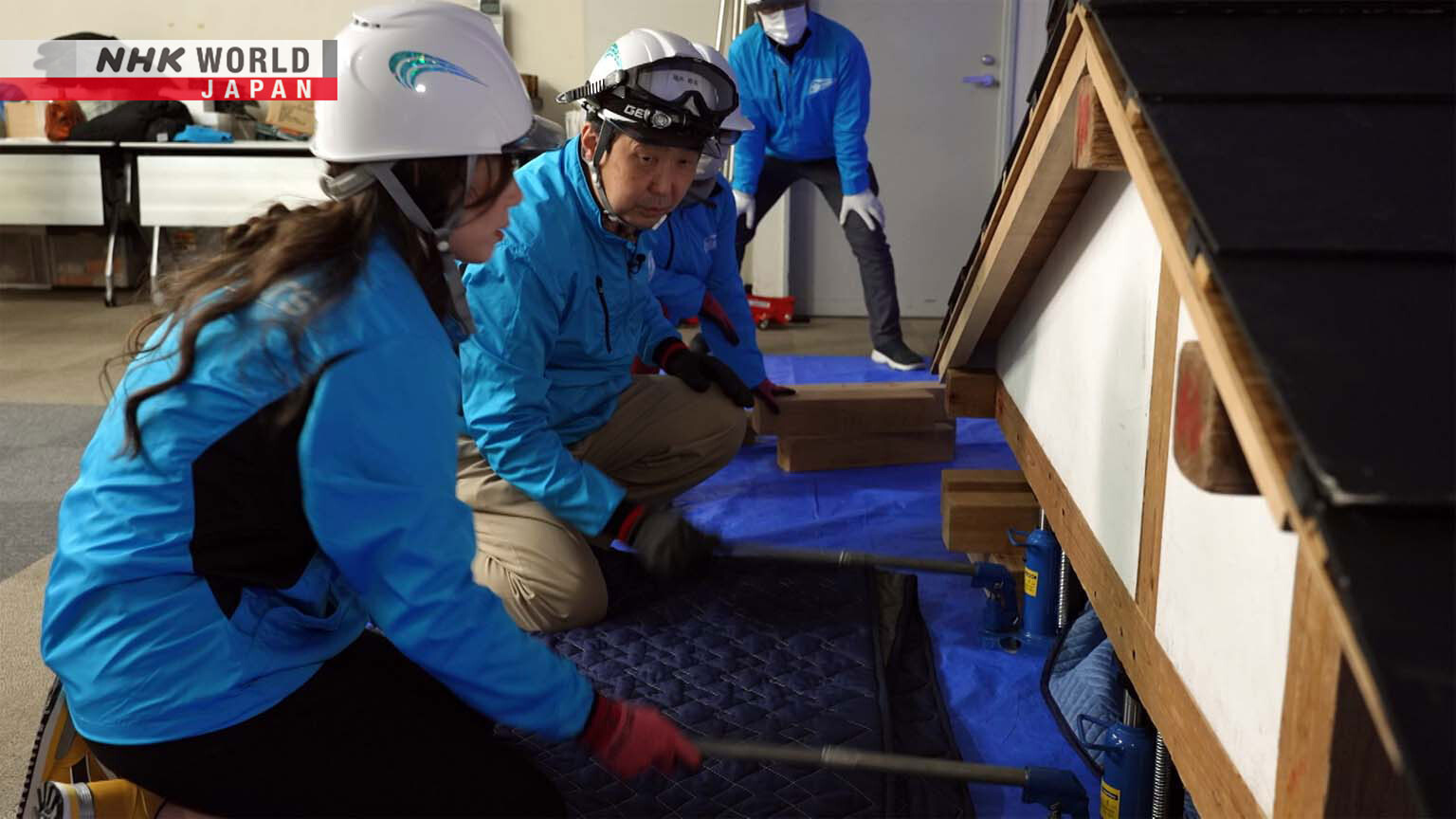#41 How to Survive an Earthquake
Be earthquake-ready! Learn survival tips for quakes and when you're trapped under rubble. You'll want to watch this before your next trip to Japan.




Transcript
Many of us take it for granted to lead an ordinary life.
That may sound a bit dull, but those are the days of peace and calm.
Until one day, we're faced with great danger without any warning.
Earthquakes.
Floods.
Volcanoes.
You may live in a place that has little risk of such natural disasters,
but you could still be caught in one while traveling.
Today, we'll focus on how to survive an earthquake.
We'll talk to experts of emergency preparedness and citizens who have experienced numerous earthquakes.
During an earthquake, "the life-saving position" will increase your chances of survival.
What exactly is the life-saving position?
If you are trapped in a collapsed building, what are the ways to increase your chances of survival?
Discover the wisdom of Japan that will help you survive an earthquake.
This is Tokyo's Shibuya Crossing.
It's known as a popular tourist spot.
Today, I'm going to interview some visitors about earthquake safety.
If you experience an earthquake indoors, what would you do?
A) Go outside from a doorway or
B) Take cover under a sturdy desk or table
For those of you watching this program, what would your answer be?
Where are you both from?
We are from Brisbane, Australia.
- "A."
- "A."
Oh, that was fast.
I thought "A" was standing in a doorframe.
- "B" sturdy desk.
- Take cover under a sturdy desk or table.
Which is the correct action to take in the event of an earthquake?
We headed to a facility where visitors can experience simulations of natural disasters such as an earthquake or a fire.
YAHAGI Hiroyuki, an expert in disaster mitigation,
will show us what actions to take during an earthquake.
The right thing to do is "B" take shelter under a sturdy desk.
During an earthquake, anything can fall on your head
including shelves, light fixtures and objectts in the shelves.
The safe space under a sturdy desk, increases your chances of survival.
This is an experiment conducted in a simulated apartment setting.
When the ground starts shaking, the objects in the shelf fall at once.
In the dining room, heavy appliances and furniture such as refrigerators and cupboards move around,
posing a risk for people to get trapped underneath.
In the Great Hanshin-Awaji Earthquake of 1995, approximately 80% of those who lost their lives,
died from being crushed by collapsed buildings and falling furniture.
The key to survival is to take proper actions to protect yourself from falling objects immediately after the earthquake strikes.
So, how do we safely take cover under a table?
Let me show you our earthquake simulation device.
After learning the tips from the director, I gave it a try.
This device can simulate the shaking of a magnitude 9.0 earthquake.
Okay, I'm ready.
Okay, so I have both of my hands on the table.
Oh, it's started to shake.
I'm gonna get under the table.
We must take cover as soon as we feel the tremor.
Then wait until the shaking stops.
I even have a hard time holding on to the table while getting in, because the shaking was so intense.
Oh, the table is shaking as well.
Oh, is it calming down?
Oh, wow.
That was a lot more intense than I thought.
And because the shaking was so very powerful,
I had a hard time even holding on to this like the whole table was shaking, really frightening.
Let's check the earthquake safety procedures again.
When you feel the ground shaking, immediately get under a sturdy table and hold on to the table legs with both hands.
Keep your feet shoulder-width apart.
Lowering your center of gravity will help you prevent falls.
Above all, ensure your own safety.
If you can't protect your entire body, focus on shielding your head.
When the shaking starts, don't flee.
Instead, stay in a safe place in a safe posture, and wait until it stops.
This is the fundamental rule.
There's no way of knowing when an earthquake will strike.
What should we do when it occurs while we're outside or in places where there are no tables?
If you are outside during a large quake, get into the roly-poly pose.
What exactly is a roly-poly position?
This is the roly-poly pose.
You lower yourself and protect your head.
It was named after the way roly-polies curl up into a ball.
Now, let me give it a try.
Raising your elbows and knees will help reduce the swaying motion.
Well, it's amazing that even with all this shaking, I'm actually able to hold this pose without falling over.
Furthermore, covering your head with a bag will reduce the risk of damage from falling objects.
So if you have a backpack or some kind of bag, you can use it to cover your head in case something falls down.
You can at least protect your head.
If you feel the ground shaking, curl up into these life-saving positions.
Some people panic when experiencing an earthquake for the first time.
However, it's crucial to act calmly, and not panic.
There are many facilities in Japan to experience such simulations.
We hope visitors will try it during their stay.
Next, we're going to introduce ways to survive, when you're trapped in a collapsed building.
You can't move.
There's no food or drink.
Rescue is nowhere in sight.
In such a situation, what can you do to survive?
Hello!
Hello!
There are so many of you.
We are the Hammers, a voluntary organization..
The Hammers is a volunteer organization for disaster relief operations founded in 2014.
Their goal is to improve the community's disaster preparedness
through activities such as conducting rescue drills for collapsed buildings.
We talked to FUKUI Toshihide, the captain of the Hammers.
What should we do if we are trapped in a collapsed building or under rubble?
What would you do, Lemi?
If I can't move, I would yell for help.
Not the best action.
Really? It's not good to yell?
That's the last resort.
Why shouldn't we yell for help?
When a major disaster strikes, the police and fire departments get flooded with calls for help.
Moreover, as transportation networks are disrupted, it takes time for rescue teams to arrive.
According to a survey in Japan, the survival rate when rescued within 24 hours is about 90%.
It drops significantly to 50% within 48 hours, and down to 20% within 72 hours.
Shouting continuously drains you of your energy, so it's best to seek help using as little energy as possible.
Then, how can we call for help?
For example, if there is a piece of metal nearby, try hitting it.
That'll make a loud noise.
Yes, it's louder than screaming.
Even if you're unable to move, if there is a hard object, you can bang it against the ground or a wall to call for help.
That's pretty loud.
The sound will reach places where your voice can't.
There are other ways to signal for help besides making noises.
You can use a mirror to reflect sunlight to signal SOS,
or if you can write, write a message on a piece of paper and drop it outside the window to get attention.
Next, let's find out what to do when you hear calls for help from under the rubble.
How would you rescue a person from a collapsed house?
I would feel the urge to help the person immediately.
Actually, we should not take such an action.
Disaster sites present many hazards.
In areas where buildings have collapsed, the risk of being caught in a secondary disaster increases when acting alone.
That is why it's important to assemble a group for rescue efforts.
Excuse me! I need help! Someone is trapped under the rubble!
Call out loudly and form a group.
You should have at least 5 members before starting your rescue efforts.
Are you alright? We're going to help you!
People waiting to be rescued are feeling very scared.
It's encouraging to know that someone is coming.
So it's important to keep talking to them while conducting the rescue.
We're going to get you out soon!
Talking and encouraging the trapped person is also a way to help during the rescue effort.
What should we keep in mind when you are the one waiting to be rescued?
First of all, stay calm.
If you are trapped in a building, make noise to call for help.
Check if your cell phone works.
Use various means to alert people. Someone will come find you.
Let's go over today's key points.
When you feel the ground shaking, don't run outside.
Take cover under a desk or a table.
Make sure to hold on to the table legs firmly.
If there is no place to take cover, get into this position.
If you are trapped in a collapsed building, do not start yelling for help.
Instead, try to get attention by banging some surface using an object.
Today, we shared some tips on how to survive an earthquake.
You never know when a natural disaster may strike.
I hope you find today's information useful,
if you ever face the risk of building collapse here in Japan or in your own city.